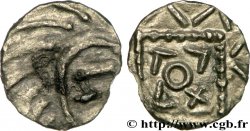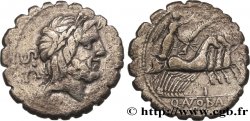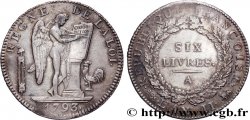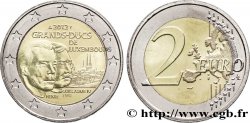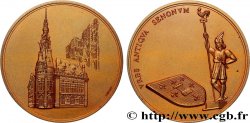Live auction - fme_888640 - LOUIS XVIII Médaille, Général La Fayette
得先注册又得到批准才可以报价。为了报价注册. 客户应该得到公司允许,那种过程需要 48 个小时。别等出售结束那一天才登记。您报价的话等于您赞成买那物品,而且按« 保价 » 证明您接受 cgb.fr 因特网拍卖使用法.
报价时只可以出全数值欧元总额。物品描述也说明销售结束时间,结束后出价都不会生效。 报价命令转达有时变动,等到最后秒钟增加否决的可能会。想多了解的话请注意 因特网拍卖常问
最高出价方将支付18%的不含税的拍卖费用
最高出价方将支付18%的不含税的拍卖费用
| 估算 : | 150 € |
| 价格 : | 101 € |
| 最高出价 : | 101 € |
| 拍卖结束日期 : | 13 February 2024 16:48:43 |
| 竞拍人 : | 2 竞拍人 |
种类 Médaille, Général La Fayette
日期: 1824
材质 copper
直径 46,5 mm
模子方针 12 h.
硬币制模工 CAUNOIS François Augustin (1787-1859)
重量 47,61 g.
侧面 lisse
印模 sans poinçon
关于品相的说明
Très belle patine marron hétérogène, légèrement irisée au revers. Très légère usure sur certains hauts reliefs de l’avers. Des rayures sur la tranche
出版目录中的项代码 :
正面
正面的文字 GENERAL - LAFAYETTE.
正面的说明书 Buste du général La Fayette, en habit, à droite ; sur la tranche de l’épaule .1824. ; au-dessous signature CAUNOIS FRENCH..
背面
背面的文字 THE DEFENDER / OF AMERICAN AND / FRENCH LIBERTY. / 1777-1824. / BORN IN CHAVANIAC, / THE 6 SEPTEMBER, / 1757..
背面的说明书 Couronne de chêne, inscription au centre en sept lignes.
评论
Cette médaille a certainement été réalisée pour les États-Unis ; elle existe aussi en bronze doré ou en bronze argenté et en or.
Cette médaille commémore le voyage de La Fayette aux États-Unis le 13 juillet 1824. Collignon (La médaille au XIXe siècle et l’histoire) décrit ainsi ce voyage “Après avoir fait un triomphal accueil à Lafayette, qui était allé revoir le théâtre des exploits de sa jeunesse, le Congrès des États-Unis avait voté une résolution où il appelait Lafayette le champion de la liberté, le héros de la Révolution, l’ami et le compagnon de Washington, et il avait envoyé un navire de guerre le chercher en France. Le Vice-Président vint le recevoir à New-York. Il fut traité dans toutes les cités américaines avec les mêmes honneurs que s’il eut été le président d’une République Française. Les récits émouvants qui arrivaient d’Amérique apportèrent aux libéraux français une consolation, un encouragement et une espérance”. Lafayette effectue ce voyage avec son fils prénommé Georges Washington, 182 villes sont visitées entre 1824 et 1825. Le Congrès le remercie en lui faisant un don de 200.000 dollars (en récompense de l’argent qu’il avait avancé personnellement pour aider la Révolution américaine) et 12.000 hectares de terres en Floride. Il fut le premier étranger à s'adresser aux deux Chambres réunies du Congrès américain et son portrait figure dans la Chambre des Représentants. Il a été élevé à titre posthume, «citoyen d'honneur des États-Unis d'Amérique», un privilège rare qui n’a été accordé qu'à quatre reprises dans l'Histoire américaine.
This medal was certainly made for the United States; it also exists in gilded bronze or silvered bronze and gold.
This medal commemorates Lafayette's trip to the United States on July 13, 1824. Collignon (The Medal in the 19th Century and History) describes this journey as follows: “After giving a triumphant welcome to Lafayette, who had gone to revisit the scene of the exploits of his youth, the United States Congress had voted a resolution in which it called Lafayette the champion of liberty, the hero of the Revolution, the friend and companion of Washington, and it had sent a warship to fetch him from France.. The Vice President came to receive him in New York. He was treated in all American cities with the same honors as if he had been the president of a French Republic.. The moving stories that arrived from America brought consolation, encouragement and hope to the French liberals.. Lafayette made this trip with his son, George Washington, and visited 182 cities between 1824 and 1825.. Congress thanks him with a donation of 200. 000 dollars (as a reward for the money he had personally advanced to aid the American Revolution) and 12. 000 hectares of land in Florida. He was the first foreigner to address both houses of the United States Congress together, and his portrait appears in the House of Representatives.. He was posthumously made an \\\"honorary citizen of the United States of America,\\\" a rare privilege granted only four times in American history.
Cette médaille commémore le voyage de La Fayette aux États-Unis le 13 juillet 1824. Collignon (La médaille au XIXe siècle et l’histoire) décrit ainsi ce voyage “Après avoir fait un triomphal accueil à Lafayette, qui était allé revoir le théâtre des exploits de sa jeunesse, le Congrès des États-Unis avait voté une résolution où il appelait Lafayette le champion de la liberté, le héros de la Révolution, l’ami et le compagnon de Washington, et il avait envoyé un navire de guerre le chercher en France. Le Vice-Président vint le recevoir à New-York. Il fut traité dans toutes les cités américaines avec les mêmes honneurs que s’il eut été le président d’une République Française. Les récits émouvants qui arrivaient d’Amérique apportèrent aux libéraux français une consolation, un encouragement et une espérance”. Lafayette effectue ce voyage avec son fils prénommé Georges Washington, 182 villes sont visitées entre 1824 et 1825. Le Congrès le remercie en lui faisant un don de 200.000 dollars (en récompense de l’argent qu’il avait avancé personnellement pour aider la Révolution américaine) et 12.000 hectares de terres en Floride. Il fut le premier étranger à s'adresser aux deux Chambres réunies du Congrès américain et son portrait figure dans la Chambre des Représentants. Il a été élevé à titre posthume, «citoyen d'honneur des États-Unis d'Amérique», un privilège rare qui n’a été accordé qu'à quatre reprises dans l'Histoire américaine.
This medal was certainly made for the United States; it also exists in gilded bronze or silvered bronze and gold.
This medal commemorates Lafayette's trip to the United States on July 13, 1824. Collignon (The Medal in the 19th Century and History) describes this journey as follows: “After giving a triumphant welcome to Lafayette, who had gone to revisit the scene of the exploits of his youth, the United States Congress had voted a resolution in which it called Lafayette the champion of liberty, the hero of the Revolution, the friend and companion of Washington, and it had sent a warship to fetch him from France.. The Vice President came to receive him in New York. He was treated in all American cities with the same honors as if he had been the president of a French Republic.. The moving stories that arrived from America brought consolation, encouragement and hope to the French liberals.. Lafayette made this trip with his son, George Washington, and visited 182 cities between 1824 and 1825.. Congress thanks him with a donation of 200. 000 dollars (as a reward for the money he had personally advanced to aid the American Revolution) and 12. 000 hectares of land in Florida. He was the first foreigner to address both houses of the United States Congress together, and his portrait appears in the House of Representatives.. He was posthumously made an \\\"honorary citizen of the United States of America,\\\" a rare privilege granted only four times in American history.







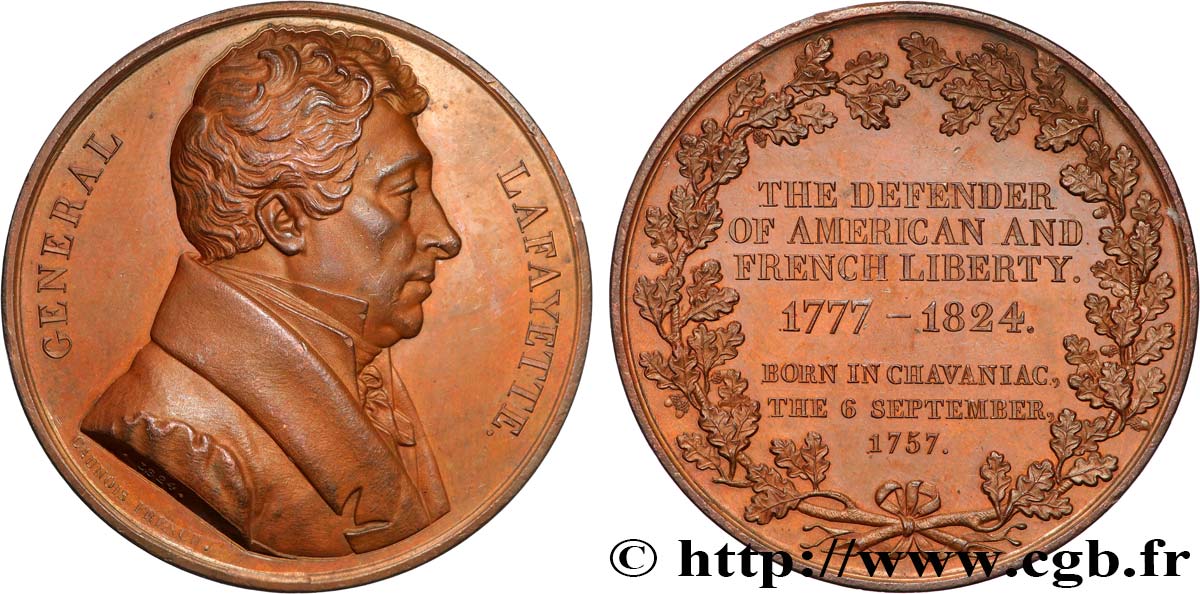
 对产品描述纠错
对产品描述纠错 打印
打印 分享我的选择
分享我的选择 提问
提问 Consign / sell
Consign / sell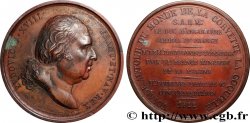
 产品介绍
产品介绍




